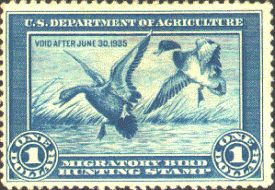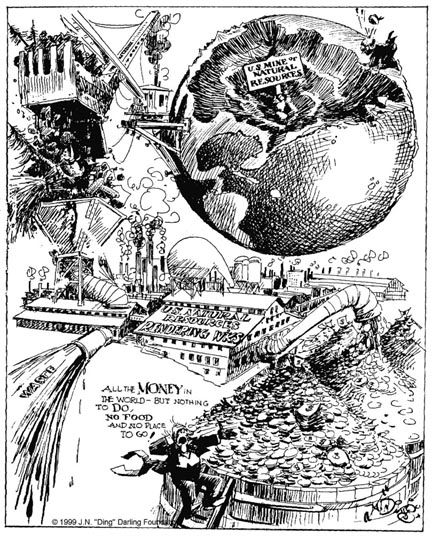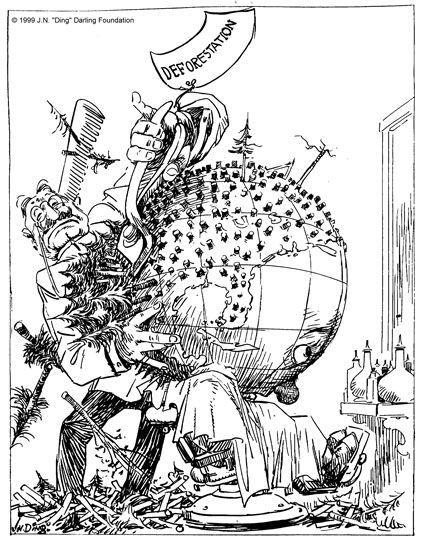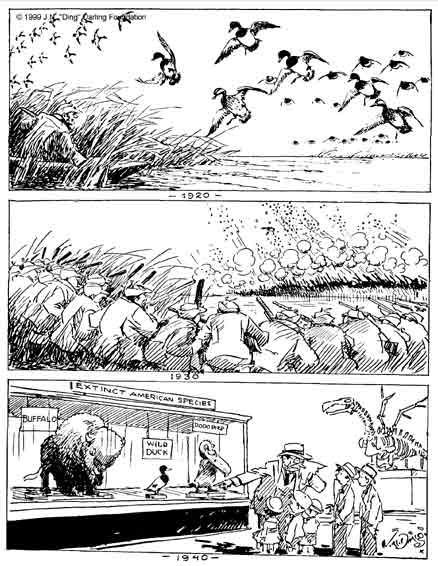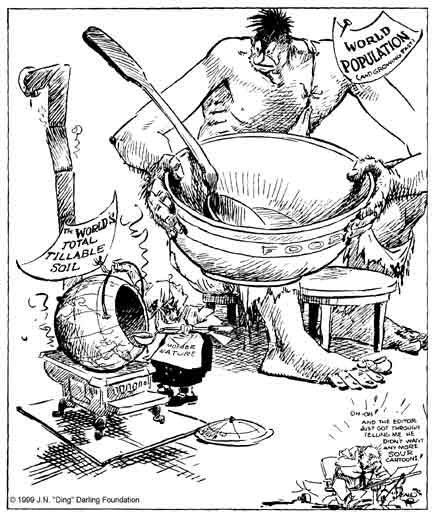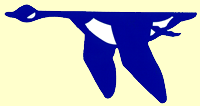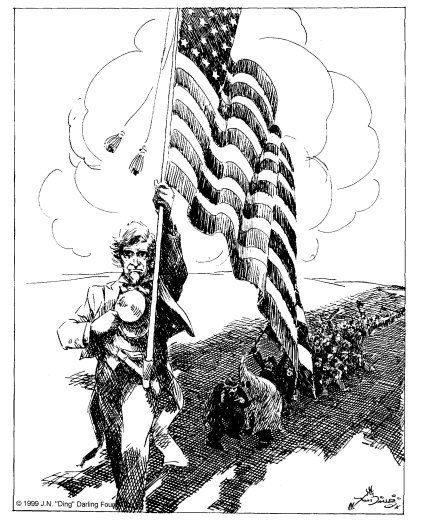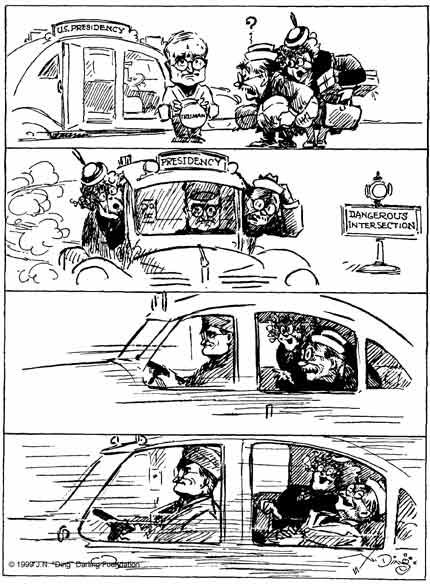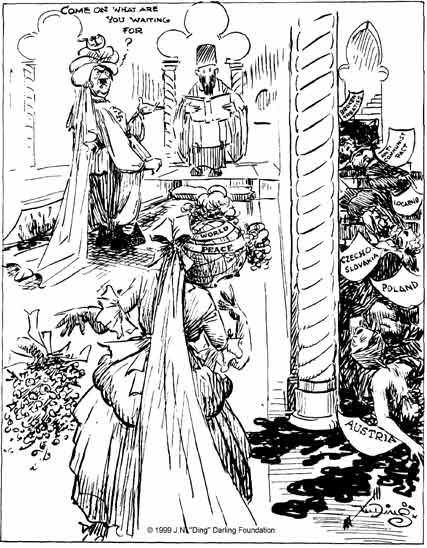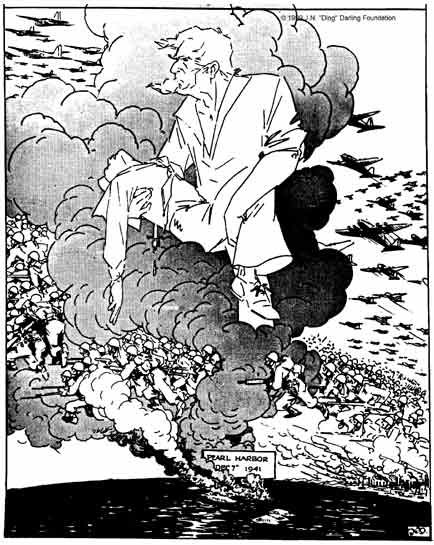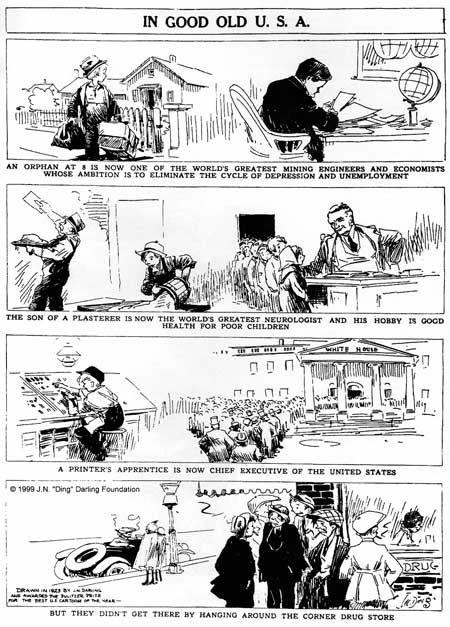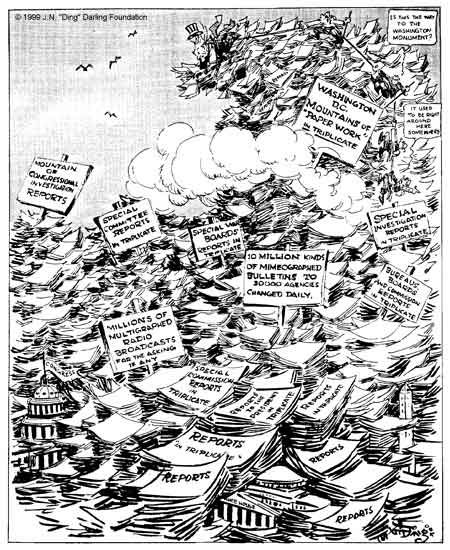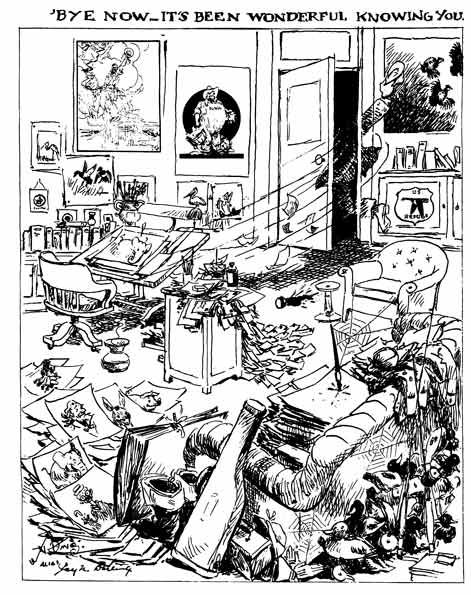Each day this month I will be profiling a notable political cartoonist. Since the choices are vast, I've decided to slim the numbers down a bit and eliminate living cartoonists. Perhaps I will do a current political cartoon stars in the future.
Here's an archive of the artists mentioned already.
Today we look at a two-time Pulitzer Prize winning cartoonist whose cartoons landed him a major position in the FDR administration!
Enjoy!
Jay Norwood "Ding" Darling was born in Michigan in 1876. His family moved to Sioux City, Iowa in 1886. When Darling was in college in the early 1890s, he developed his nickname, Ding, which was an abbreviation of his last name.
He would use "Ding" as his signature for the rest of his career.
After graduating college, Darling went to work as a reporter in Sioux City. He moved to Des Moines and began working at the Des Moines Register doing cartoons in 1906. After a few years, he moved to New York to work as a cartoonist, but quickly returned to Des Moines in 1913. He moved to New York again in 1916 to work for the New York Herald Tribune, but once again, he couldn't stand to be away from Iowa, so he returned to Des Moines in 1919, which is where he spent the rest of his cartooning career, although he was popular enough that the Herald Tribune continued publishing his cartoons until his retirement in 1949.
Darling was mostly concerned with conservation, and conservation themes popped up frequently in his cartoons.
Here are a few:
How Rich Will We Be
When We Have Converted All Our Forest, All Our Soil,
All Our Water Resources and Minerals to Cash?
Wonder What Mother Will Say
When She Finds He's Had It Clipped?
What a Few More Seasons Will Do to the Ducks
The Only Kettle She's Got
I love the bit on the last one where Darling notes that his editor is on his case about the cartoons being too depressing!
Due to his widespread popularity on the topic of conservation, in 1934, President Roosevelt appointed Darling as the Director of the U.S. Biological Survey, the forerunner of the U.S. Fish and Wildlife Service.
While there, Darling designed the first "duck stamps," stamps people needed to have to hunt ducks.
Darling also designed the logo for the United States Park Refuge system...
During this time, Darling continued to produce cartoons, as well. Here are some of his notable ones..
On the topic of racism in America...
Even the Best Flag in the World Has Its Shadow
On the evolution of Harry Truman as President...
The Passengers Are Beginning to Sit Back and Relax
On the folly of trusting Adolf Hitler...
Bluebeard's Seventh Wife
And, in one of his most famous pieces, a commemoration of Pearl Harbor...
Remember!
Darling won the Pulitizer Prize for Editorial Cartooning twice.
First, in 1924, for the following cartoon speaking of the importance of putting effort into your life...
And in 1943, for the following cartoon that, well, really isn't all that great.
What a place for paper waste salvage
Apparently, upon learning he had won the Pulitzer, Darling had to actually dig through his records to find out what cartoon they were talking about, that's how unmemorable this piece was!
Darling died in 1962, and upon his death, he had his secretary release the following cartoon, which perfectly encapsulated the folksy charm that defined Darling's cartoons for decades and made him such a beloved figure...
Check out the Jay Norwood Darling Foundation for more cartoons and other information about Darling.

